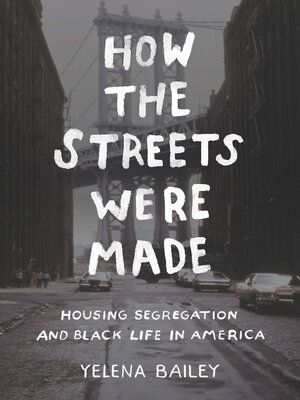
Sign up to save your library
With an OverDrive account, you can save your favorite libraries for at-a-glance information about availability. Find out more about OverDrive accounts.
Find this title in Libby, the library reading app by OverDrive.



Search for a digital library with this title
Title found at these libraries:
| Library Name | Distance |
|---|---|
| Loading... |
In this book, Yelena Bailey examines the creation of “the streets” not just as a physical, racialized space produced by segregationist policies but also as a sociocultural entity that has influenced our understanding of blackness in America for decades. Drawing from fields such as media studies, literary studies, history, sociology, film studies, and music studies, this book engages in an interdisciplinary analysis of the how the streets have shaped contemporary perceptions of black identity, community, violence, spending habits, and belonging.
Where historical and sociological research has examined these realities regarding economic and social disparities, this book analyzes the streets through the lens of marketing campaigns, literature, hip-hop, film, and television in order to better understand the cultural meanings associated with the streets. Because these media represent a terrain of cultural contestation, they illustrate the way the meaning of the streets has been shaped by both the white and black imaginaries as well as how they have served as a site of self-assertion and determination for black communities.
Where historical and sociological research has examined these realities regarding economic and social disparities, this book analyzes the streets through the lens of marketing campaigns, literature, hip-hop, film, and television in order to better understand the cultural meanings associated with the streets. Because these media represent a terrain of cultural contestation, they illustrate the way the meaning of the streets has been shaped by both the white and black imaginaries as well as how they have served as a site of self-assertion and determination for black communities.







